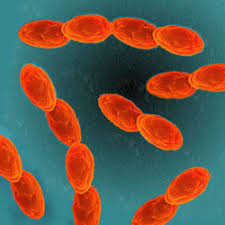Please click the frequently asked questions below for further information and IPC precautions required:
What is Glycopeptide Resistant Enterococci (GRE) or Vancomycin Resistant Enterococci (VRE)?
GRE stands for Glycopeptide Resistant Enterococci. Enterococci are bacteria (germs) that are commonly found in the bowels (gut) of most humans. There are many different species of enterococci but only a few have the potential to cause infections in humans.
GRE are bacteria that are resistant to the group of antibiotics known as Glycopeptides. These include Vancomycin and Teicoplanin. GRE are sometimes referred to as VRE – which stands for Vancomycin Resistant Enterococci.

What infections does it cause?
GRE can cause wound infections and blood poisoning. However, it can also cause infections of the bile duct or urinary tract.
Are some people more at risk than others?
The main risk factors for GRE / VRE infections are:
- prolonged hospital stay
- antibiotic treatment
- intensive care treatment
Why is this information important?
If NIAS staff are aware that the patient has a suspected or confirmed case this should be communicated to the Control Room (Emergency or Non-emergency as appropriate) and the staff in the receiving unit when transferring the patient to ensure effective patient care and management.
How is it spread?
GRE can spread between patients either through contact with a patient known to have GRE or by touching the environment that has been occupied by a patient with GRE e.g. patient equipment, stretchers, hand rails, straps etc.
The risk increases if the patient is having diarrhea as the bacteria can live harmlessly in the gut.
It can also be spread through staff’s hands if staff do not adhere to the 5 moments of Hand Hygiene (HH) using the 7 step technique. It is also essential that staff use PPE appropriately ensuring that gloves are used and changed appropriately with HH.
IPC Precautions
- Contact precautions should be used
- Hand Hygiene should be completed as per the 5 moments in line with usual practice.
- Eye protection should always be risk assessed and used with any patient where there is a risk of splashes including spitting and productive coughing.
- Gloves and Aprons should be worn.
- The patient should ideally be transported via ambulance (eg. PCS) with no other patients present where possible. Individual cases can be discussed with the IPC team and a risk assessment can be made.
- Laundry should be treated as contaminated, placed into an alginate bag and placed into a red laundry bag.
What cleaning is required?
All equipment and the ambulance should have an in-between patient clean paying particular attention to touch points.
Do staff need any prophylaxis or follow up?
Staff do not need to be followed up.
